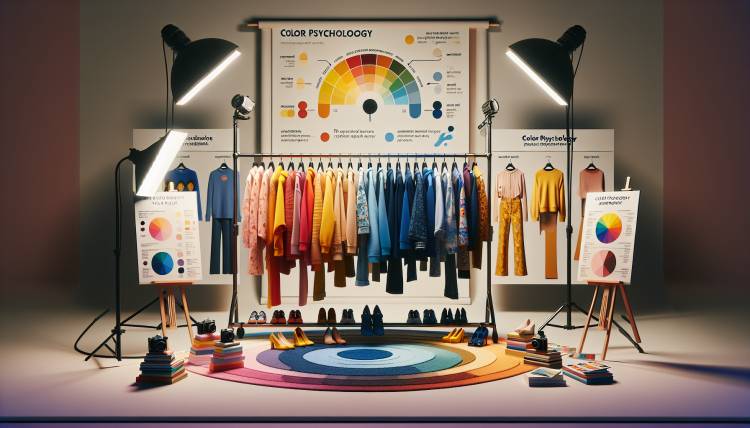
When it comes to fashion, we often focus on trends, styles, and silhouettes, but one powerful element that is often overlooked is color. Color can evoke emotions, influence perceptions, and even affect our mood. By understanding color psychology, you can make more intentional choices in your wardrobe that not only elevate your style but also resonate with your personal brand and the messages you want to convey. In this post, we will explore how to harness the power of color in your outfits.
The Basics of Color Psychology
Color psychology is the study of how colors affect human behavior and emotions. Each color carries its own set of meanings and associations. Hereâs a quick guide:
- Red: Passion, energy, and action; great for making a bold statement.
- Blue: Calmness, trust, and professionalism; ideal for work settings.
- Yellow: Happiness, positivity, and creativity; perfect for cheerful outfits.
- Green: Balance, growth, and health; excellent for earthy, relaxed styles.
- Purple: Luxury, power, and ambition; perfect for making an impression.
- Black: Sophistication, elegance, and authority; timeless and versatile.
- White: Purity, simplicity, and freshness; great for clean and crisp looks.
Choosing Colors Based on Your Goals
When selecting your outfits, consider the message you want to send. Here are some scenarios to help guide your color choices:
- Job Interview: Opt for shades of blue or gray to convey professionalism and reliability.
- Date Night: Choose reds or blacks to evoke passion and confidence.
- Casual Outing: Bright colors like yellow or light blue can enhance your cheerful vibe.
- Networking Events: Use purple or green to stand out while remaining approachable.
- Relaxed Days: Earthy tones like brown or olive can create a serene and comfortable feel.
Building a Color Palette for Your Wardrobe
Creating a cohesive color palette for your wardrobe can simplify dressing and ensure that your outfits are harmonious. Follow these steps to build your palette:
- Identify your favorite colors and the emotions you wish to evoke.
- Choose a base color that you feel comfortable wearing often, such as black, gray, or navy.
- Select 2-3 accent colors that complement your base color, considering the meanings behind each color.
- Incorporate neutral tones to balance out more vibrant colors.
- Experiment with different shades and patterns to add depth to your outfits.
Mixing and Matching Colors
Once you have your color palette established, it's time to play with mixing and matching. Here are some tips to keep in mind:
- Complementary Colors: Colors that are opposite each other on the color wheel, like blue and orange, create a vibrant look.
- Analogous Colors: Colors that are next to each other on the color wheel, such as blue and green, offer a harmonious effect.
- Monochromatic Looks: Different shades of the same color can create a sophisticated and sleek appearance.
- Add Neutrals: Use neutral colors to balance bold colors and create a polished look.
Accessorizing with Color
Accessories are a fantastic way to incorporate color into your outfits without committing to an entire outfit in a bold hue. Consider the following:
- Scarves: A vibrant scarf can brighten up a neutral outfit.
- Handbags: A colorful handbag can serve as a statement piece.
- Shoes: Bold shoes can add a fun twist to any ensemble.
- Jewelry: Use colorful gemstones or enamel pieces to introduce color subtly.
Testing the Waters: Experiment with Color
Not sure where to start? Try incorporating color gradually into your wardrobe:
- Begin with accessories like scarves, bags, or jewelry.
- Choose one colorful piece to wear with an otherwise neutral outfit.
- Experiment with different shades and combinations to discover what resonates with you.
- Trust your instinctsâif a color makes you feel good, wear it!
Final Thoughts on Color and Style
By understanding color psychology and making intentional choices about the colors you wear, you can not only enhance your personal style but also communicate your personality and emotions effectively. Remember that fashion is a form of self-expressionâembrace colors that inspire and empower you!
